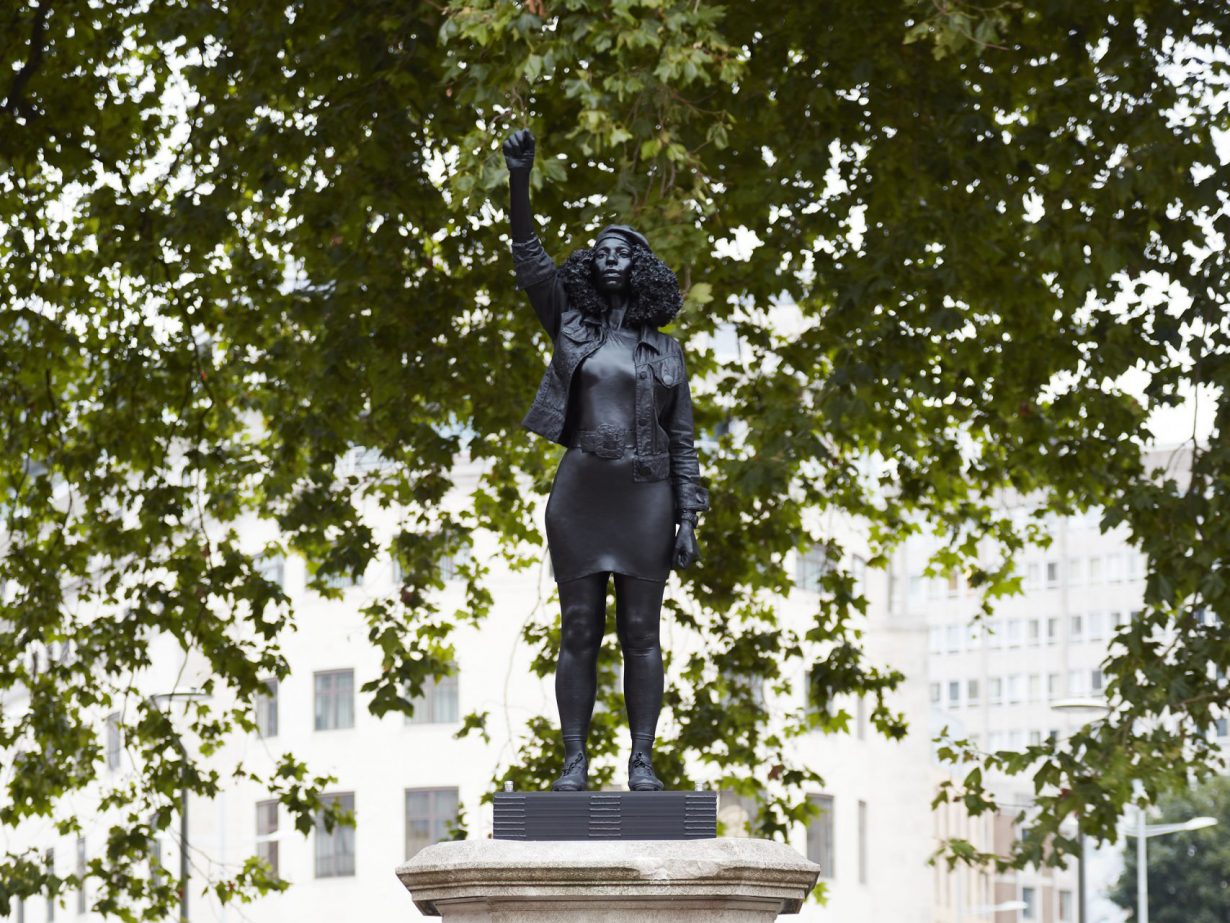The artist’s depiction of activist Jen Reid temporarily occupied the plinth of a toppled statue to slave-trader Edward Colston in Bristol last year

Artist Marc Quinn’s statue of Black Lives Matter campaigner Jen Reid – which briefly occupied a plinth in Bristol in July 2020, after protesters toppled a statue of the 17th-century slave trader Edward Colston – could make a return.
The statue, titled A Surge of Power (Jen Reid) (2020), was originally covertly installed by a team of 10 people in the early hours of the morning. Quinn’s sculpture, which depicts Reid with raised fist – mirroring Reid’s gesture when photographed at the toppling of Colston’s statue – was later removed because its installation had not secured council approval.
‘I saw pictures of Jen on the plinth and she spontaneously made this gesture and I thought this is amazing. She’s made an extraordinary artwork just by doing that and it needs to be crystalised into an object and put back on to the plinth,’ the artist said. But the city’s mayor Marvin Rees argued at the time that the replacement of the Colston statue needed to be decided through a democratic process, pointing out that the Jen Reid statue ‘was the work and decision of a London-based artist’.
The BBC reports that the planning services company Interpolitan Ltd sought permission to install the statue for a period of two years. An appeal has now been lodged because the council did not make a decision over the request. The council told the BBC that the application had only been submitted retrospectively last summer. A planning inspector will now review permission for the statue – with a formal hearing date yet to be scheduled.
Colston’s statue was dumped into Bristol harbour by activists on 7 June 2020; it was later retrieved, and is set to go on display in a museum, alongside ephemera from the Black Lives Matter protests.
‘Gifting is not always a benign act,’ Kadish Morris wrote of Quinn’s gesture last year for ArtReview. ‘It’s easy to be enchanted by visibility, but quick-fix reactionary gestures are flimsy grounds to fight anti-blackness upon. Sculptures created by white men that bypass democratic processes (for which activists in Bristol have campaigned, for too long) are not the kinds of radical justice we need to see in the arts and culture sector.’